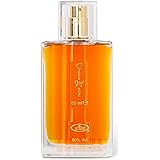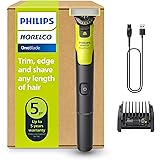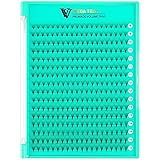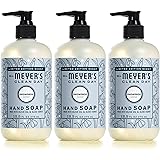Have you ever spent precious time perfecting your manicure with a set of beautiful press on nails, only to have one pop off while you’re reaching for your keys? Or perhaps you’ve experienced that disheartening moment when your gorgeous design, meant to last for days, starts to feel flimsy and and weak just hours after application. It’s incredibly frustrating, isn’t it? The vision of effortlessly chic hands quickly fades when your press on nails can’t keep up with your daily life. The video above perfectly captures this common dilemma, showing the stark contrast between those ‘soft and weak’ nails and the kind that are genuinely ‘strong’ and impressive. This experience is all too familiar for many of us who love the convenience and style of press on nails but demand durability.
The quest for long-lasting, robust press on nails is a journey many beauty enthusiasts embark on. While the convenience and endless design possibilities make them a go-to choice for a quick style update, the true test lies in their strength and longevity. Nobody wants their beautiful manicure to be a fleeting dream. Luckily, achieving a resilient and impressive set of press on nails is more accessible than you might think, involving a blend of smart choices and proper application techniques.
Understanding the Flaws: Why Some Press On Nails Fail
It’s a common complaint: some press on nails simply aren’t built to last. The video succinctly highlights the issues: ‘soft and weak,’ ‘easy to fall off.’ But what truly makes a set of fake nails succumb to these common pitfalls? Often, it comes down to a few critical factors that compromise their integrity and wear time.
Material Quality: The Foundation of Durability
The very first indicator of a press-on nail’s potential strength is its material. Many affordable options are made from thin, basic plastic that lacks the necessary flexibility and resilience. These materials are prone to bending, cracking, and even breaking with minimal impact. Consider it like the foundation of a building; if the base is weak, the entire structure is compromised. High-quality press on nails, in contrast, often utilize more advanced materials like ABS plastic, acrylic, or gel-infused polymers. These offer a superior balance of rigidity and flexibility, allowing the nail to withstand daily wear without snapping or deforming.
Adhesive Strength: The Unsung Hero
Another major culprit behind press on nails falling off prematurely is an inferior adhesive. Whether you’re using sticky tabs or liquid nail glue, the quality makes a world of difference. Cheap adhesive tabs might lose their stickiness quickly, especially when exposed to water or pressure. Similarly, weak nail glue might not create a strong enough bond between your natural nail and the press-on. For a truly secure fit, a high-quality, long-lasting nail glue is often preferred over basic adhesive tabs, particularly if you need your nails to last for more than a day or two. The right adhesive creates a powerful bond, securing your beautiful press on nails firmly in place.
Design and Thickness: More Than Just Aesthetics
Beyond the material, the actual design and thickness of the press-on nail play a role. Nails that are too thin, especially at the stress points like the free edge or sidewalls, are naturally weaker. They’re more susceptible to chipping and cracking. Also, certain shapes, like very sharp stiletto or coffin nails, can be more prone to snagging and breakage if not designed with adequate reinforcement. A well-constructed press-on will have a consistent thickness that provides structural integrity without feeling overly bulky or unnatural.
Embracing Strength: What Makes Press On Nails Truly Strong?
The video’s ‘strong’ nail demonstration, where it’s shown to be incredibly durable, highlights what we all aspire to in our artificial nails. So, what exactly goes into making a set of press on nails robust enough to tackle everyday challenges and maintain their pristine appearance?
Superior Material Composition
As mentioned, the material is paramount. High-grade acrylic or gel press-ons are designed to mimic the durability of salon-applied extensions. These materials are not only harder and more resistant to impact but also possess a degree of flexibility that prevents brittle breaks. They can often withstand bumps and knocks that would easily shatter a weaker plastic nail. This advanced composition ensures your beautiful press on nails stay intact longer.
Advanced Adhesion Technology
Strong press-ons are often paired with high-performance adhesives. These glues are formulated for extended wear, offering a strong, waterproof bond that can last for weeks, not just days. Some brands even offer specialized adhesive tabs that are thicker and more resilient than standard ones, providing a cushioning effect that absorbs shock and prevents premature lifting. Proper application of these strong adhesives is key to maximizing the longevity of your press on nails.
Reinforced Design for Longevity
Manufacturers of strong press on nails pay attention to engineering. This means creating nails with fortified stress points, especially along the free edge and where the nail meets the cuticle. Some designs incorporate a slightly thicker tip or a stronger curve to enhance overall resilience. This meticulous attention to detail transforms a simple beauty accessory into a durable, long-lasting statement piece.
Mastering the Application: Ensuring Your Strong Press-Ons Last
Even the strongest press on nails won’t perform their best without proper application. This is where your technique can make all the difference, transforming a temporary fix into a long-lasting manicure. Achieving a secure and durable fit is about more than just sticking them on; it’s a careful, methodical process.
Step 1: Nail Preparation is Paramount
This is arguably the most crucial step. A clean, dry, and properly prepped nail bed is essential for optimal adhesion. Start by gently pushing back your cuticles to expose more of the nail surface. Then, lightly buff the natural nail surface with a fine-grit buffer; this creates a slightly textured surface for the adhesive to grip onto. After buffing, cleanse your nails thoroughly with an alcohol wipe to remove any oils, dust, or residue. Any remaining oils can severely weaken the adhesive bond, leading to early pop-offs.
Step 2: Choosing the Right Size and Adhesive
Select the correct size press-on nail for each finger. A nail that’s too small won’t cover your natural nail adequately, while one that’s too large will overlap onto your skin and feel uncomfortable, potentially lifting prematurely. If using nail glue, apply a small, even bead to the back of the press-on nail, or a thin layer directly onto your natural nail. If using adhesive tabs, choose the tab size that best fits your nail, press it firmly onto your natural nail, and then peel off the protective film. For an extra secure hold, some users apply both a strong adhesive tab and a small dot of glue on top of the tab.
Step 3: Precise Application and Pressure
Once the adhesive is applied, align the press-on nail with your cuticle, making sure it’s straight and doesn’t touch your skin. Press down firmly for at least 10-20 seconds, applying even pressure across the entire nail surface. This ensures maximum contact between the press-on, the adhesive, and your natural nail. For best results, avoid exposing your newly applied press on nails to water for at least an hour or two to allow the adhesive to fully cure and set.
Beyond Application: Maintaining Your Durable Press On Nails
Once your strong press on nails are perfectly applied, a little ongoing care can significantly extend their lifespan. Think of it as a small investment in maintaining your beautiful manicure.
Protecting Your Manicure
While strong press-ons are designed for durability, being mindful of how you use your hands can prevent premature wear and tear. When performing tasks like washing dishes, gardening, or cleaning, consider wearing gloves. This protects your nails from prolonged water exposure, harsh chemicals, and physical impact that could otherwise weaken the adhesive or damage the nail surface. Avoid using your nails as tools to open cans or scrape surfaces, as this can put undue stress on the press-on and cause it to lift or break.
Regular Inspections and Quick Fixes
Periodically check your press on nails for any signs of lifting or loosening, especially around the edges. If you notice a small gap, you can often address it quickly. Apply a tiny drop of nail glue to the affected area, press down firmly, and hold until it re-adheres. This proactive approach can prevent a minor lift from turning into a full pop-off. Also, keep your cuticles moisturized with cuticle oil to promote healthy natural nails underneath and keep the nail beds flexible, which can contribute to the overall comfort and longevity of your press-ons.
Smart Removal for Reusability
When it’s time to remove your press on nails, do so gently to avoid damaging your natural nails or the press-ons if you plan to reuse them. Soak your hands in warm, soapy water for 10-15 minutes, or use a specialized nail oil or acetone-free nail polish remover around the edges. Gently lift the nails from the sides using a cuticle stick. Never forcefully pull or pry them off, as this can harm your natural nail bed. With careful removal and cleaning, many high-quality press-on sets can be enjoyed multiple times, offering even more value from your durable press on nails.











